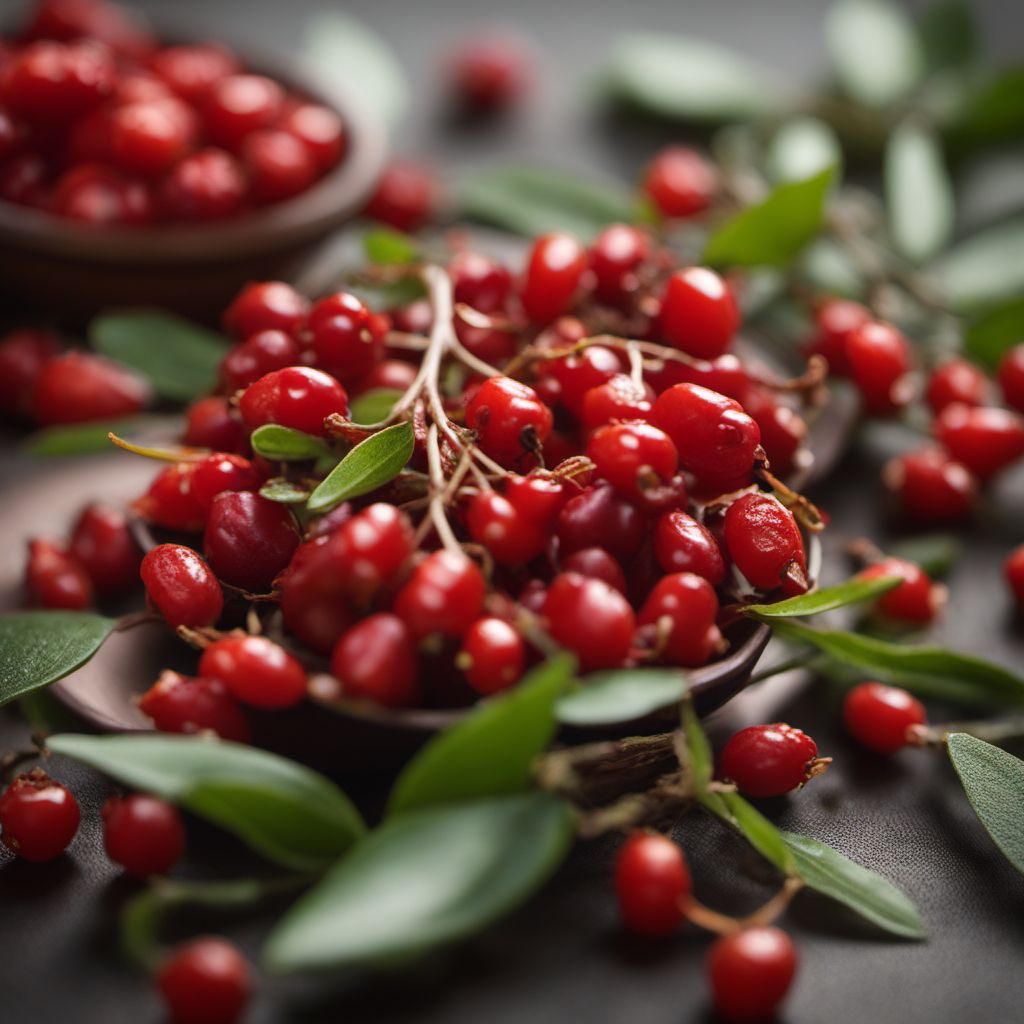
Ingredient
Chinese wolfberries
The Mighty Red Gems: Unveiling the Power of Chinese Wolfberries
Chinese wolfberries are small, bright red berries that boast a subtly sweet and tangy flavor. They are commonly used in both sweet and savory dishes, adding a delightful pop of color and a burst of antioxidants to various recipes.
Origins and history
Chinese wolfberries have a long-standing history in Chinese culture, where they have been revered for their potential health benefits and medicinal properties. They have been used in traditional Chinese medicine to promote vitality, boost the immune system, and improve overall well-being. Today, Chinese wolfberries have gained popularity worldwide for their nutritional value and versatility in culinary applications.
Nutritional information
Chinese wolfberries are a nutritional powerhouse, rich in antioxidants, vitamins, and minerals. They are particularly high in vitamin C, vitamin A, and iron. These berries are also low in calories and fat, making them a healthy addition to a balanced diet.
Allergens
Chinese wolfberries are generally safe for consumption, but some individuals may experience allergic reactions. It is advisable to exercise caution and consult with a healthcare professional if you have any concerns or known allergies.
How to select
When selecting Chinese wolfberries, look for plump, bright red berries that are free from mold or signs of spoilage. Opt for organic or pesticide-free options whenever possible to ensure the highest quality and minimize potential chemical residues.
Storage recommendations
To maintain the freshness and quality of Chinese wolfberries, store them in a cool, dry place away from direct sunlight. Consider transferring them to an airtight container or resealable bag to prevent moisture absorption and preserve their texture. Proper storage will help extend their shelf life and retain their nutritional value.
How to produce
Chinese wolfberries can be grown in various regions with a temperate climate. They thrive in well-drained soil, ample sunlight, and regular watering. Home gardeners can cultivate Chinese wolfberries in containers or directly in the ground, provided they meet the necessary growing conditions.
Preparation tips
Chinese wolfberries can be enjoyed in numerous ways, such as adding them to smoothies, trail mixes, or granola bars for a burst of sweetness and nutrition. They can also be used in baked goods, salads, or stir-fries to introduce a vibrant color and unique flavor. Additionally, Chinese wolfberries can be brewed into tea or infused into spirits for a delightful twist.
Substitutions
Dried cranberries or raisins can be used as substitutes for Chinese wolfberries, providing a similar chewy texture and fruity sweetness. However, they may not offer the same nutritional benefits or unique flavor profile.
Culinary uses
Chinese wolfberries are widely used in Chinese cuisine, particularly in soups, stews, and herbal teas. They are also incorporated into desserts, such as rice pudding or mooncakes, to add a touch of sweetness and visual appeal.
Availability
Chinese wolfberries are commonly cultivated in China, as well as other countries with suitable growing conditions, including the United States, Canada, and various regions in Europe. They are readily available in Asian markets, health food stores, and online retailers worldwide.

